The spiritual life is often described as a journey. To be beatified by the Catholic Church, or named “Blessed,” is to receive official recognition that a person has reached an end to that journey and enjoys the beatific vision, or to “be in heaven.”
But the journey of the Blessed is not over. There’s another, often unseen, leg: the journey back to us on Earth, the conclusion of which is recognized by the church when it canonizes a person as a saint.
Holiness, after all, comes not from the escape from humanity but in the elevation of human nature. I began to understand this when, as an undergraduate student, I was asked to read the book The Way of All the Earth (Notre Dame Press) by Congregation of Holy Cross Father John S. Dunne, in which he tells “The Parable of the Mountain”: Humans from many diverse cultures see the spiritual life in terms of climbing a mountain. The valley of everyday life is filled with the chaos and complications of love and war. The seeker looks to the top of the mountain and sees solitude. God must be there, and the seeker embarks on a journey up the mountain’s slope to find purity and eternity.
God is on top of the mountain, of course, because God is everywhere. But when the seeker gets to the mountaintop, she finds that God has also gone on a journey. Without knowing it, while climbing the seeker passed God descending into the valley of love and war. God is only complete when incarnated among us. And so, to be a fully actualized human being, purified and divinized, one must live among us.
Thus, the Blessed turn around and make the journey back down the mountain into our struggles of love and war, not separate from our world but at the heart of its mystery.
The struggles with love and war of these five Blessed spoke to me. I think they are on that last leg of the journey to fully embrace our struggles here on Earth.
Antananarivo, Madagascar
Victoire Rasoamanarivo (1848–1894) laid on her bed, ready to start the last leg of the greatest migration in human history. Her homeland, Madagascar, was the western edge of the great Austronesian diamond, all the way from Taiwan in the north, Hawaii in the east, New Zealand in the south, and thousands of islands in between.
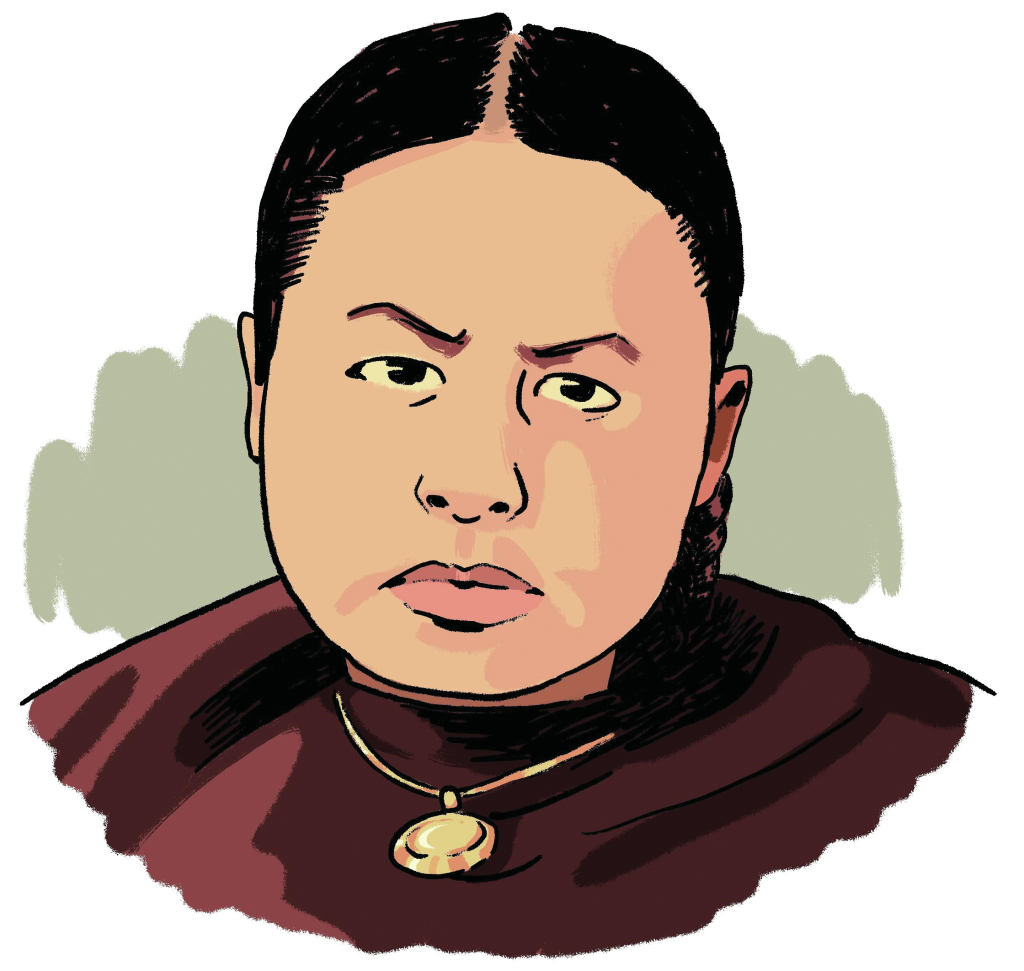
Around 1,200 years ago, Austronesian wayfarers found Madagascar, one of the last places to be settled on the planet. With East African peoples, they forged a new society. The island is a land of incredible biodiversity, with species found nowhere else, such as the iconic lemur, the smallest primate known for its huge eyes.
Rasoamanarivo was something of a spiritual lemur, unlike anyone in her society. As the midwife of faith in Madagascar, she spent her life sailing against the current of her noble family and the colonial storm that characterized the arrival of the gospel in so much of the world.
Rasoamanarivo came of age just as the gospel began penetrating Madagascar. Queen Ranavalona I feared any outside influence within the recently unified island and opposed Christianity. With her death in 1861, French Catholics gained a foothold. Rasoamanarivo entered their new Catholic school at age 13.
As a young girl, she immediately took to the faith, developing a devotion to the Blessed Mother and the rosary, and was baptized on November 1, 1863. She wanted to be a nun but could not. “Providence had decided other-wise,” she said, and she began a long pattern of improvising a role that had no precedent in her society: to be a follower of Jesus and conform her life to his radical call to discipleship.
Rasoamanarivo had the mixed blessing of being part of a family whose prominence was second only to the royal family. Shortly after her baptism, her family pressured her into a political marriage with a powerful non-Catholic cousin. Protestantism gained influence in the upper class, and her family urged her to convert. Rasoamanarivo had no children and was looked down upon. Her family now wanted her to leave her husband because of his alcoholism. She refused and instead prayed for his conversion.
Rasoamanarivo also negotiated war. Tension with the French erupted into the first Franco-Malagasy War. Many Malagasy considered Catholicism to be a foreign faith, and in 1883 the government expelled missionaries and closed the churches. “If you oppose this by force,” Rasoamanarivo told the army guarding the church, “my blood will be the first you will shed.” She opened a church, and, even without clergy, it became the center of the Catholic community.
Rasoamanarivo was vindicated when her husband accepted baptism on his deathbed in 1887. She herself administered the sacrament. For the last nearly seven years of her life, Rasoamanarivo lived as a holy widow, visiting prisoners, caring for lepers, and spending hours in prayer.
Now it was her turn. Like countless Austronesian ancestors, she prepared to embark across new waters. Raising her rosary beads to the sky, she called out, “Mother, Mother, Mother.” Then she set out on her journey to cross the sea of birth and death.
New Britain, Papua New Guinea
Peter To Rot (1912–1945) was from the Austronesian-speaking Tolai people and thus a very distant cousin of Rasoamanarivo. The Tolai inhabit the northeastern corner of New Britain, one of the islands that make up Papua New Guinea. Papua New Guinea is one of the most diverse nations on Earth, with almost 850 languages divided into dozens of unrelated families.
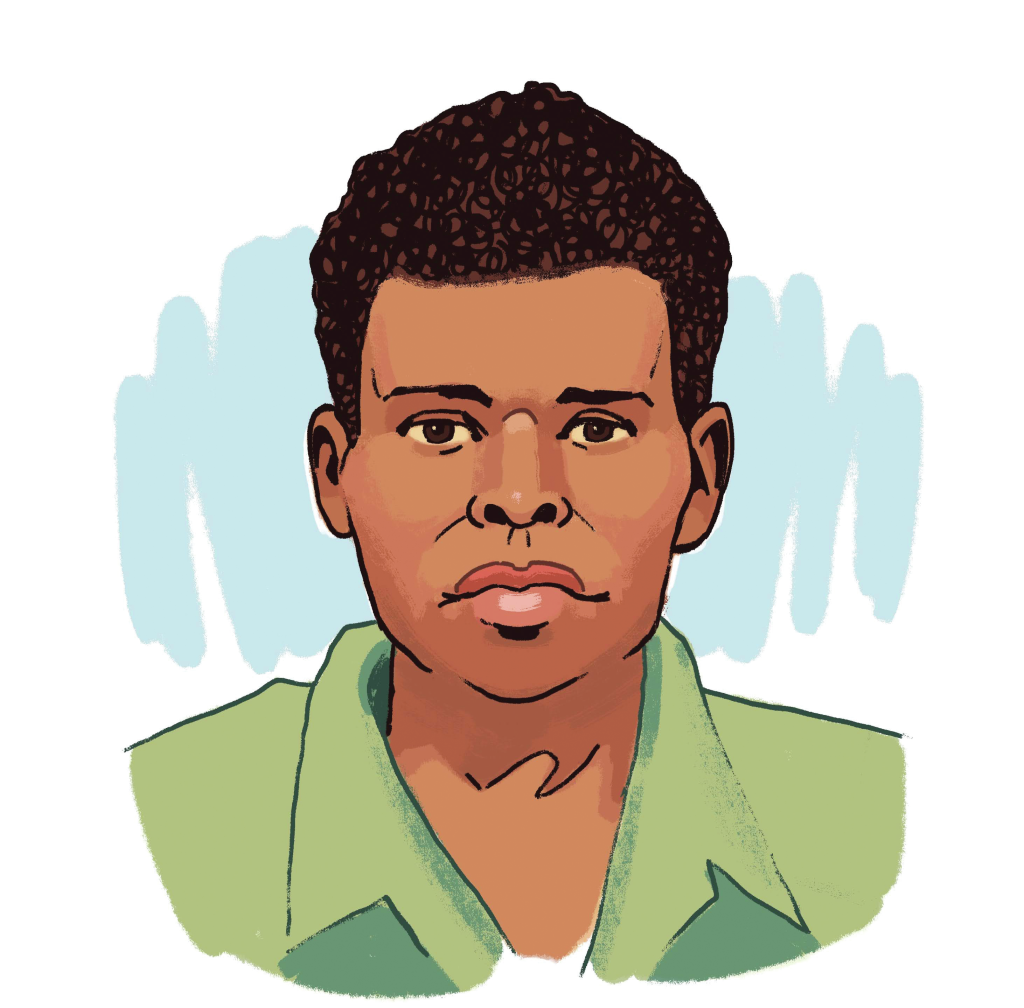
To Rot was the third son of Angelo Tu Puia, one of the tribal chiefs and the first adult to be baptized Catholic among his people. Tu Puia organized the communal acceptance of Catholicism and mapped out its direction. When one of the Missionaries of the Sacred Heart suggested that his son could be a priest, Tu Puia declined, stating their “generation was not yet ready,” but To Rot could be trained as a catechist instead.
To Rot was then sent to St. Paul’s College of the Missionaries of the Sacred Heart in Taliligap. He graduated from the seminary-like community in three years and returned to Rakunai, where he taught in the school and catechized the community. He maintained a rigorous prayer life with a love of scripture that may have stemmed from the Methodists, who first evangelized the area.
To Rot married in the traditional Tolai way, offering 50 coils of mussel shells for the hand of Paula la Varpit. Together they had three children and probably hoped for a stable family life.
But then war came when the Japanese Army invaded in 1942. The soldiers rounded up and imprisoned the priests and religious. When they advanced on the mission compound a year later, To Rot met them alone, somehow escaping with his life despite the military assault on the church.
With the clergy and religious removed, To Rot suddenly became the leader of the church. He taught in the open despite Japanese hostility. He baptized, ministered to the sick and dying, and witnessed marriages. He regularly made the long trek to the prison camp with gifts of food and brought back the Holy Eucharist to Rakunai, where he kept it in a shrine in the hillside tunnels built for shelter against bombing raids.
Persecution against the Catholics in Rakunai intensified. The Japanese seemed to acknowledge the Catholics’ spiritual power, blaming them for military setbacks. The invaders promoted a return to polygamy, not only to undermine village authority and encourage obedience to Japanese rule, but also to make it easier to recruit prostitutes for the army. To Rot would not back down.
It’s been all too easy to look at catechists and other committed lay Catholics as lesser versions of priests and consecrated religious, but in the case of To Rot and many other catechists across the globe, “less” was more. With their intimate understanding of culture and communal connections, catechists birthed an incarnated faith among newly evangelized peoples. When the visible leadership was removed, leaders like To Rot and Rasoamanarivo stayed, two of countless models for what Pope Francis hopes to resurrect for the church today with the 2021 apostolic letter Antiquum Ministerium (Instituting the Ministry of Catechist).
The Japanese reached their limit, imprisoning To Rot on Christmas Day in 1944 and then executing him by lethal injection in July 1945. When asked why they killed To Rot in a trial after the war, they responded, “Too much Christo.”
New Haven, Connecticut
Blessed Michael J. McGivney (1852–1890), the founder of the Knights of Columbus, the world’s foremost Catholic fraternal benefit society with close to 2 million members, had many striking characteristics that made people notice him: His youthful, boyish face. Exemplary pastoral compassion. An understated way of leading without taking center stage. A deep love of Christ.
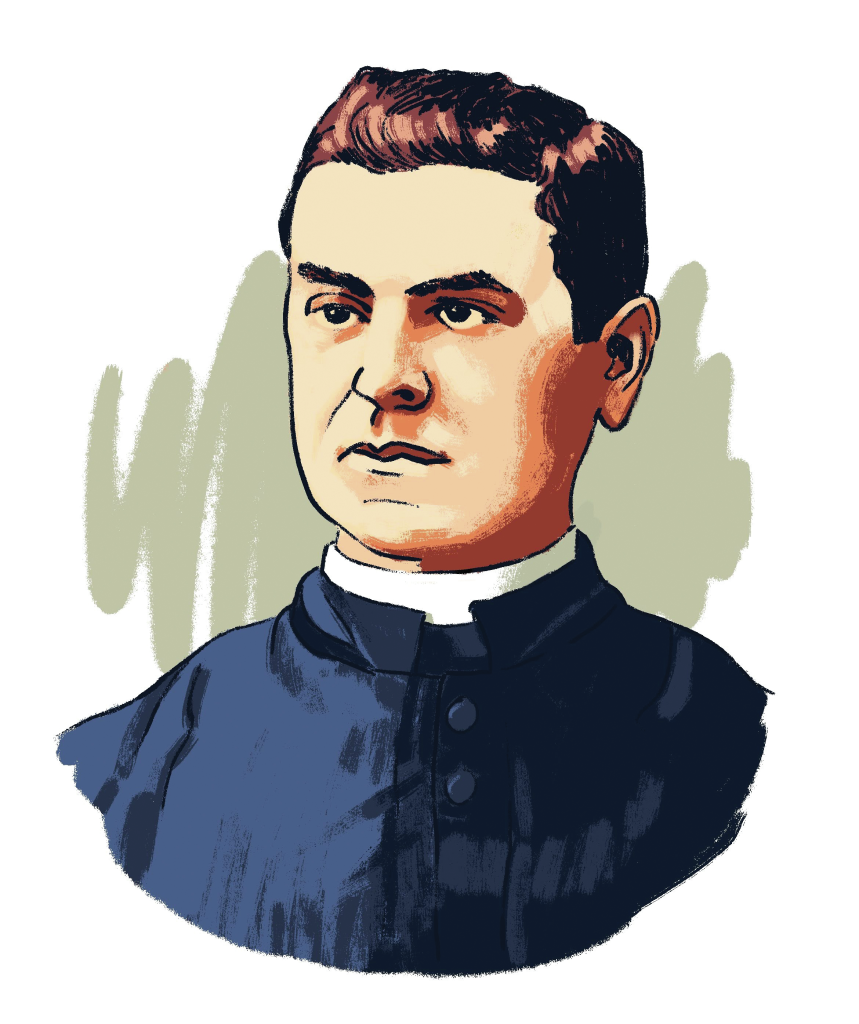
If we pair McGivney with To Rot, we might see little in common other than their personal faith. With modern eyes we might imagine To Rot doing the work of pulling up Rakunai to the level of “civilization” that McGivney worked to fine-tune in New Haven. I think that if we look at their work in detail, the opposite comes into focus: McGivney was working to pull up New Haven to the cultural level of Rakunai.
To Rot inherited a society with strong extended family relationships, societal roles developed over millennia, and a deep connection to place. Papuan society was changing as it began entering global society. But if you were born there, you inherited clear expectations about how to be a good human being and practices to accomplish that. To Rot sought to change some practices, such as polygamy, but his work was largely to elevate with the gospel what was already good.
McGivney worked primarily with Irish-American immigrants and their children. He had less evangelization to do, but he worked with people whose world had largely dissolved. The stable patterns of rural Ireland that grew organically out of pre-Christian tribal societies—clear social roles, extended family ties, deep cultural continuity, and a connection to place over generations—were ripped away by migration.
American cities like New Haven exacerbated this effect, with a fast-changing economy, the growing influence of mass culture, and previously inconceivable cultural change. Small groups of people living in the same place for centuries were suddenly thrown up into the air like a deck of cards and shuffled into new, often random patterns.
This was particularly true of men. American men of the Gilded Age (1870–1900) were the first generation to make their living by working for others. In Ireland you practiced a craft or worked your family’s land; now you were often little more than a replaceable cog in the machines of a factory. Sure, you earned better wages than in Ireland. But the cost was great: You had no safety net to protect your family in the event of injury or death and no stable identity to anchor you in life.
Secret societies stepped in and filled the gap. They offered material support through insurance programs and identity through communal rituals and exotic regalia. The societies were often explicitly anti-Catholic. This was not surprising given the United States’ default anti-Catholicism. Secret societies underwent massive growth during the Gilded Age, from a couple thousand members to more than 5 million.
It was in this context that McGivney founded the Knights of Columbus. At the most basic level, he wanted to provide through insurance the safety net that families needed. Culturally and spiritually, McGivney wanted a society that was not secret but gave men an identity while they connected directly to the life of faith. And, thinking ahead of his time, he wanted it to be run by laypeople.
McGivney’s vision, in other words, was to rebuild the Catholic villages that had been lost in migration, a vision not too different from what To Rot had for Rakunai.
Budapest, Hungary
Blessed Sára Salkaházi (1899–1944) rounded the corner to find Nazi soldiers surrounding the Working Women’s Hostel that she ran. They were looking for Jews. They had come to the right place: Salkaházi was hiding close to 100 people in her network of hostels.
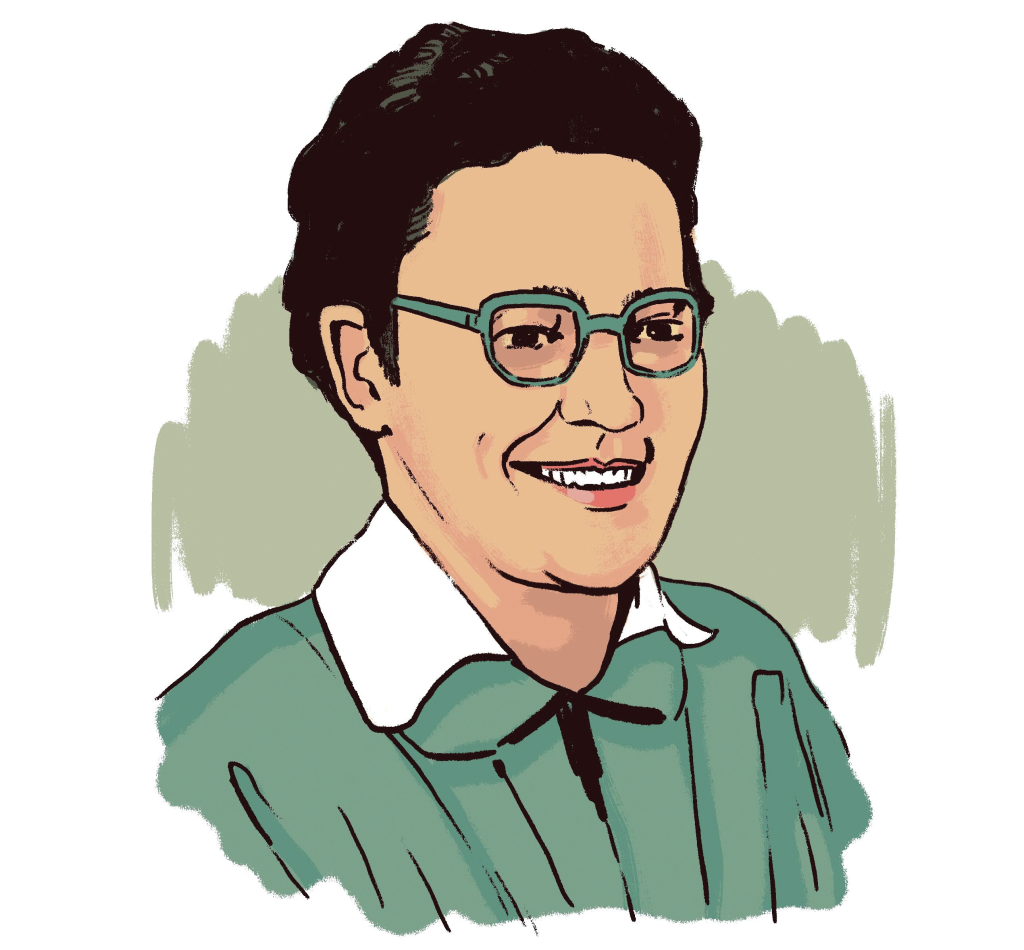
The Nazis had four suspects and a religion teacher in custody. Rather than walking past, Salkaházi introduced herself as the director of the hostel. The Nazis took her away with the others they had arrested.
From an early age, Salkaházi demonstrated deep concern for those around her and the courage to buck convention. Her brother Lipot remembered her as both humorous and prayerful. “She was a tomboy with a strong will and a mind of her own,” he said. “When it came to play she would always join the boys in their games or tug of war.”
Salkaházi started her work life as an elementary school teacher but left for political reasons. After a stint as a bookbinder, she became a journalist for the official paper of the National Christian Socialist Party of Czechoslovakia. Salkaházi wrote articles about injustice and lived a vibrant social life, including a brief engagement.
In 1927 Salkaházi took a course from the Sisters of Social Service and was deeply attracted to their way of life that brought together the work for justice and the life of prayer. Both the sisters and Salkaházi wrestled with her desire to enter the order and the trappings of her journalistic lifestyle.
Salkaházi entered the society in Budapest in 1929.She threw herself into her ministry: teaching, writing, lecturing, and organizing Czechoslovakia’s national Catholic Women’s Association. Salkaházi survived burnout and skepticism from her superiors about her vocation and took her final vows on Pentecost in 1940, taking her motto from the Book of Isaiah: “Alleluia! Ecce ego, mitte me (Here I am, send me)!”
And so on December 27, 1944, the Lord did. That night, the Nazis brought the six captives down to the Danube River. The soldiers made them strip naked. Salkaházi kneeled down, made the sign of the cross, and was shot dead, her body left in the river.
Salkaházi’s presence lives on, not only as Blessed but in the very earth. The World Holocaust Remembrance Center awarded “In memoriam” to Salkaházi and her fellow Sister Margaret Slachta for their heroic love, planting in the Yad Vashem garden a tree of gratitude in their honor.
Oran, Algeria
You see in Mohamed Bouchikhi (1975–1996) what was in Salkaházi and what she gave her life for: love beyond human limitations.
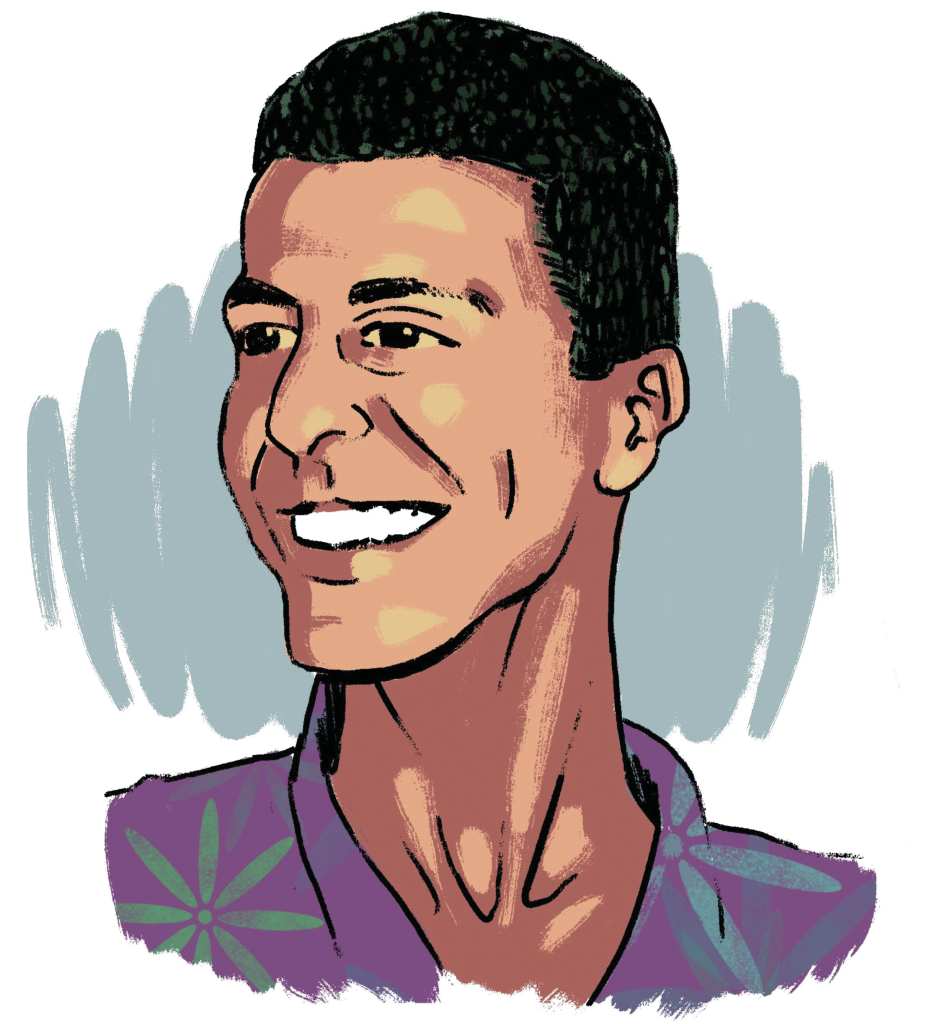
Bouchikhi was born in 1975 in Algeria. He grew up next to the church’s presbytery in Oran. He befriended the priests and sisters and helped them with their work. When old enough, he ran errands in the church’s white Peugeot sedan and became the driver of his friend, Blessed Pierre Claverie (1938–1996), the bishop of Oran.
Claverie grew up in Algeria, part of the French minority. Like most French, he lived in a colonial bubble. It wasn’t until going to France to study that the full context hit Claverie. He didn’t speak Arabic and knew nothing of Algerian life. But Claverie now realized that Algeria was his home.
Claverie returned and immersed himself into the homeland he never knew. He studied Arabic and became so proficient that he taught classical Arabic to Algerians. Claverie said Mass in Arabic and wore a stole with the words Allah Muhabba (God is love). “It’s there,” he said, “that my true personal adventure began—a rebirth.”
But then, in 1991, a civil war started, beginning what many Algerians refer to as the “Black Decade.” The primary victims were not foreigners and Christians but Algerian Muslims, with as many as 200,000 losing their lives.
Much of the French population fled the country. Some chose to stay and risk being a visible symbol of a troubled history. Yet they did not see themselves as a persecuted church or foreign minority. Instead, they saw themselves as a small part of the terrorized majority, such as one Trappist whose vocation was due to the witness of a Muslim friend, a policeman named Mohammed, who was killed for protecting a Frenchman.
Claverie stayed as well, telling a friend, “If it’s just for one like Mohamed [Bouchikhi], it’s enough of a reason to stay.” When the death threats started, Claverie asked Bouchikhi if it would be better to step back. This angered Bouchikhi. He would stay as well.
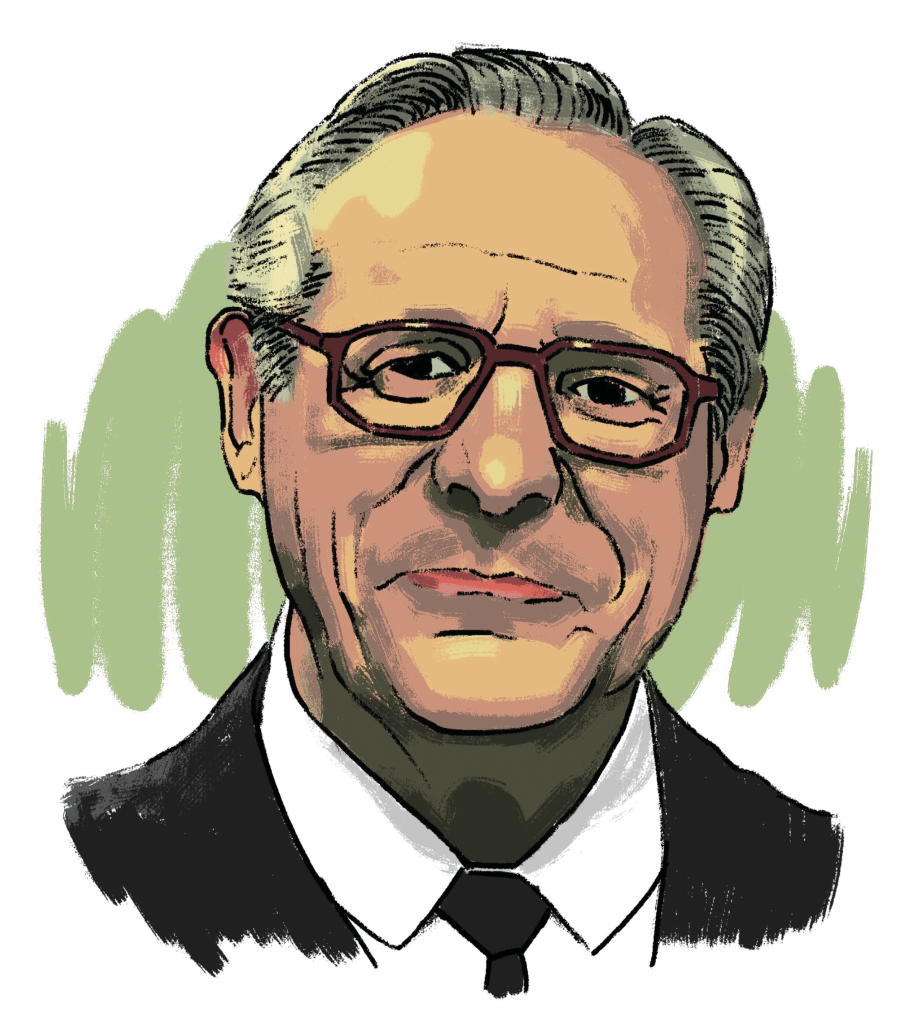
On the night of August 1, 1996, Bouchikhi picked up Claverie at the airport. City lights flashing by cut the late-night darkness outside the white Peugeot. Upon arriving home, a bomb went off, killing them both.
Later Bouchikhi’s diary was found. The final entry read: “Forgive me for any time that an evil word has passed my lips, and I ask all of my friends to forgive me on account of my youth. Yet, on this day on which I am writing to you, I remember the good that I have done in my life. May God, in all of his power, help me to surrender to him, and grant me his tenderness.”
On December 8, 2018 Claverie and 18 others were beatified in Oran, in part to honor them in the context of the tens of thousands of Muslims who were killed as well. As a Muslim, Bouchikhi was not beatified, but he was honored in the official icon.
The Algerian martyrs display to me the highest level of heroic witness. At the same time, what Bouchikhi did was in some ways more impressive. He didn’t have the security of doctrine or the promise of reward, only the naked truth of human friendship to face the unknown. What that means has not and probably will never be parsed out doctrinally, but Bouchikhi will forever be in the company of the Blessed.
The return
The Blessed long to be in our company. Canonization, the last of a four-step process to becoming a saint, moves the Blessed from local figures into veneration by the universal church.
You never know who will be canonized, but I think these Blessed are coming back. And in a way I can’t explain, Bouchikhi is leading the way.
This article also appears in the February 2022 issue of U.S. Catholic (Vol. 87, No. 2, pages 18-23). Click here to subscribe to the magazine.
All artwork: Caleb Newton


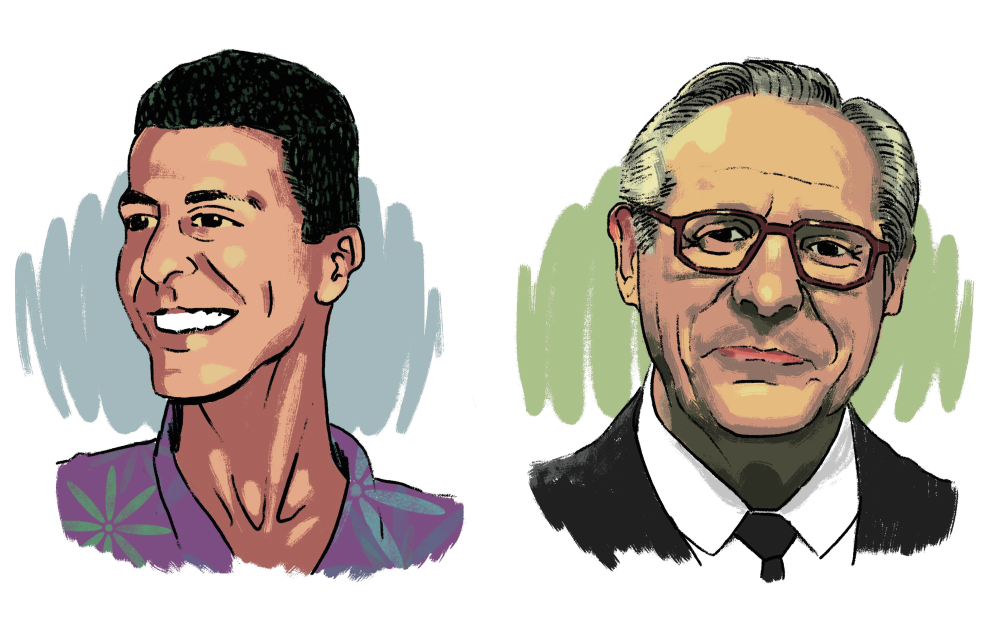

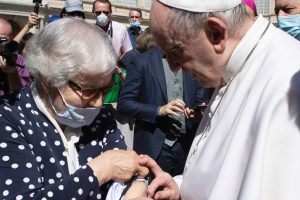








Add comment